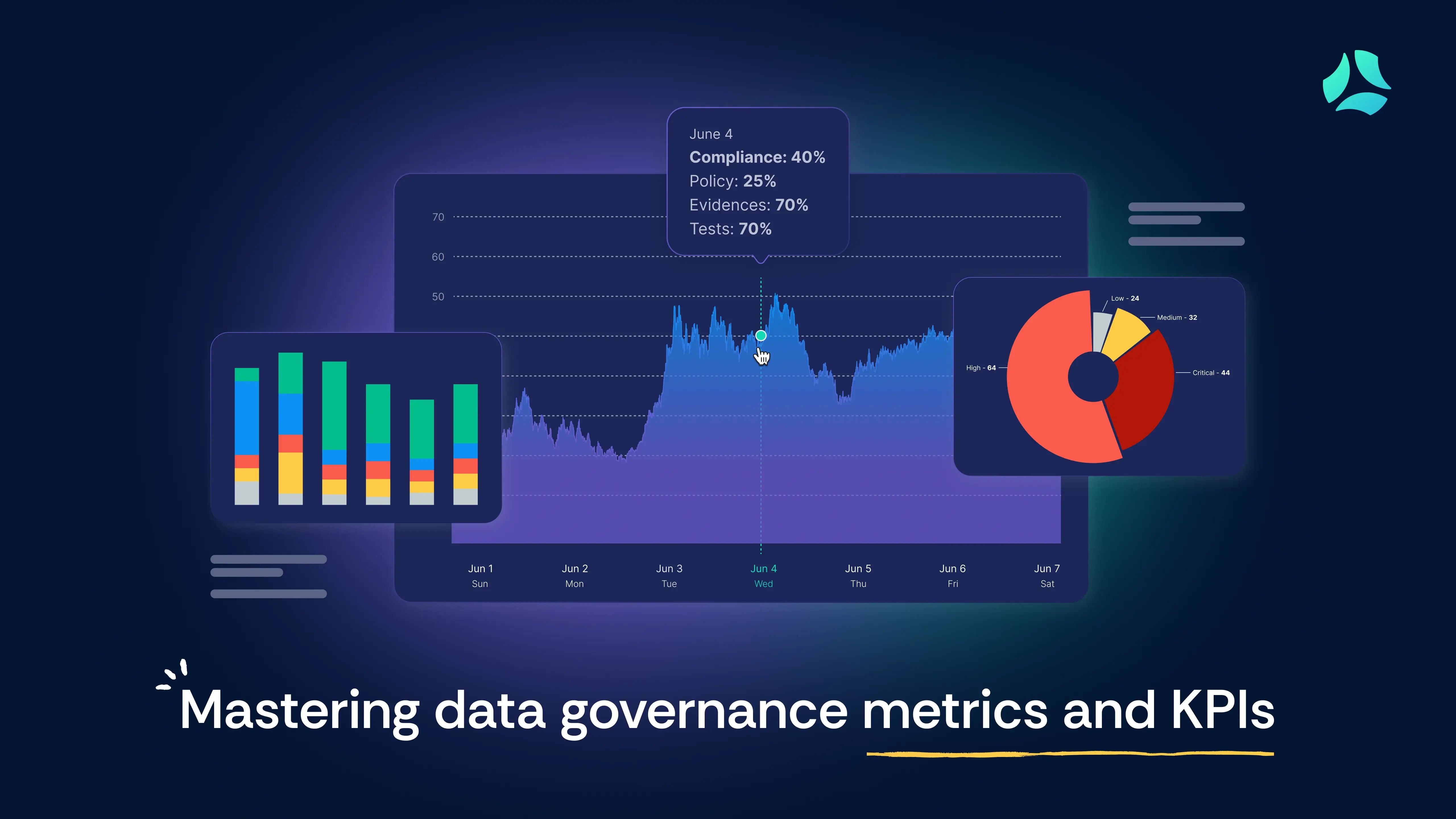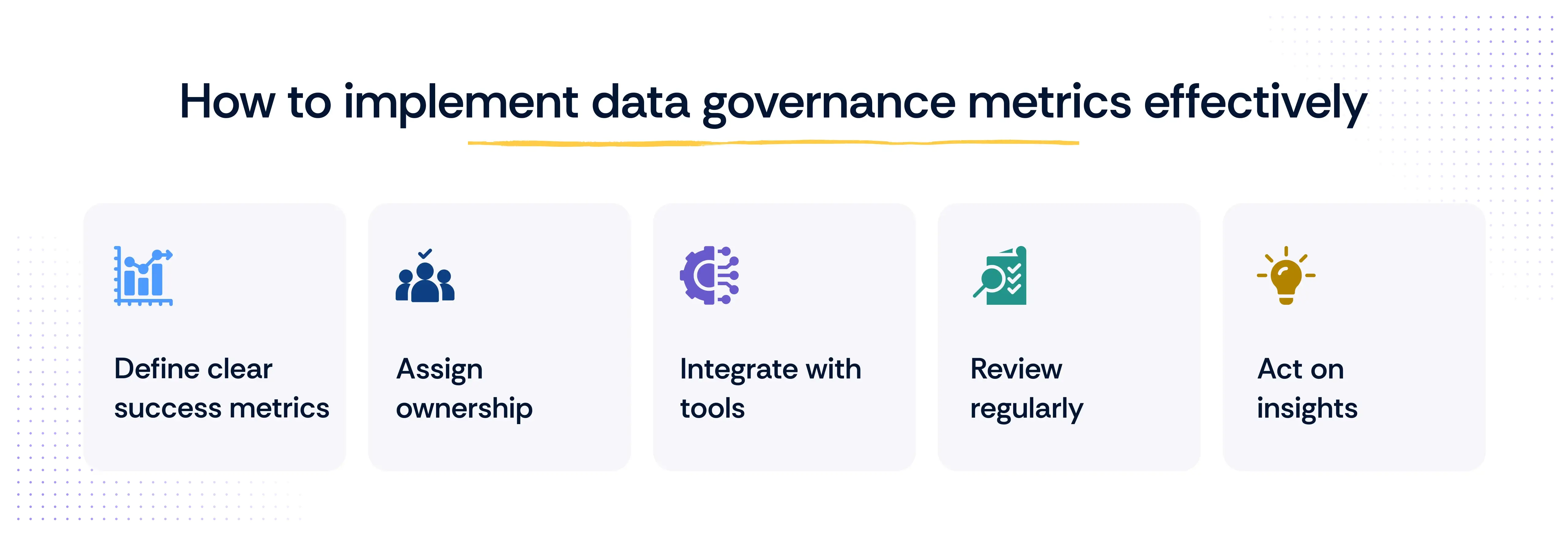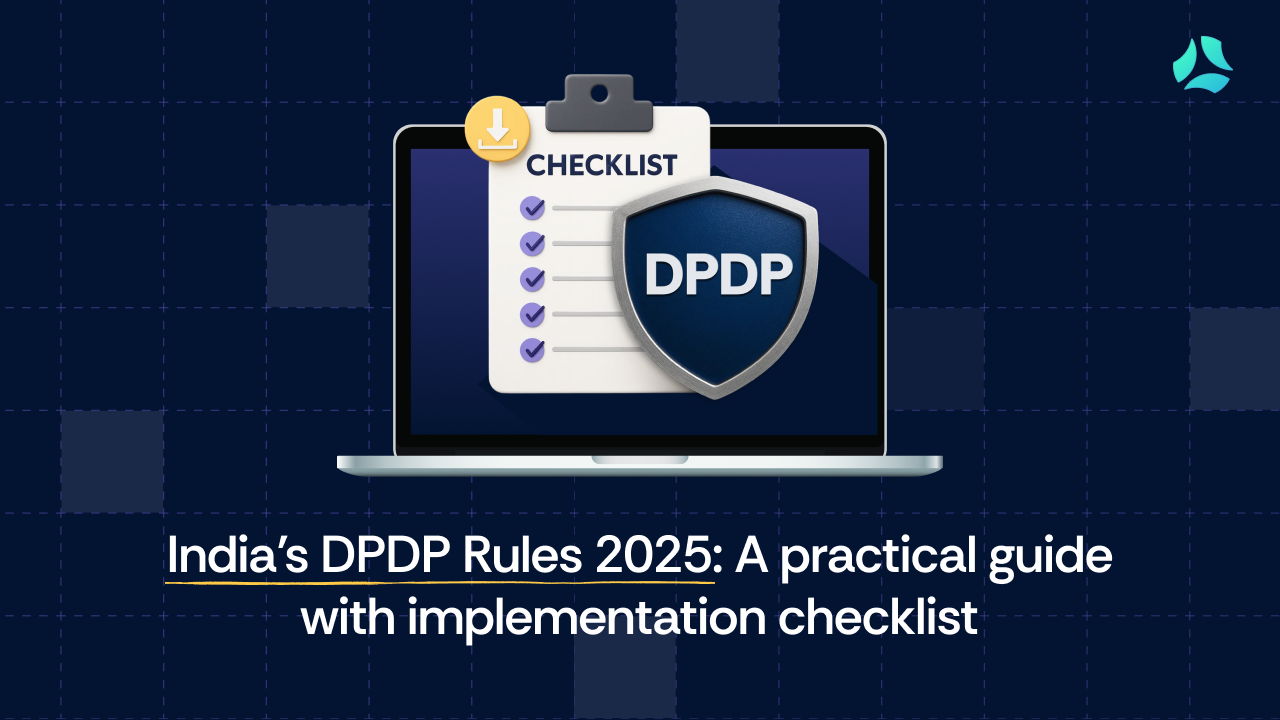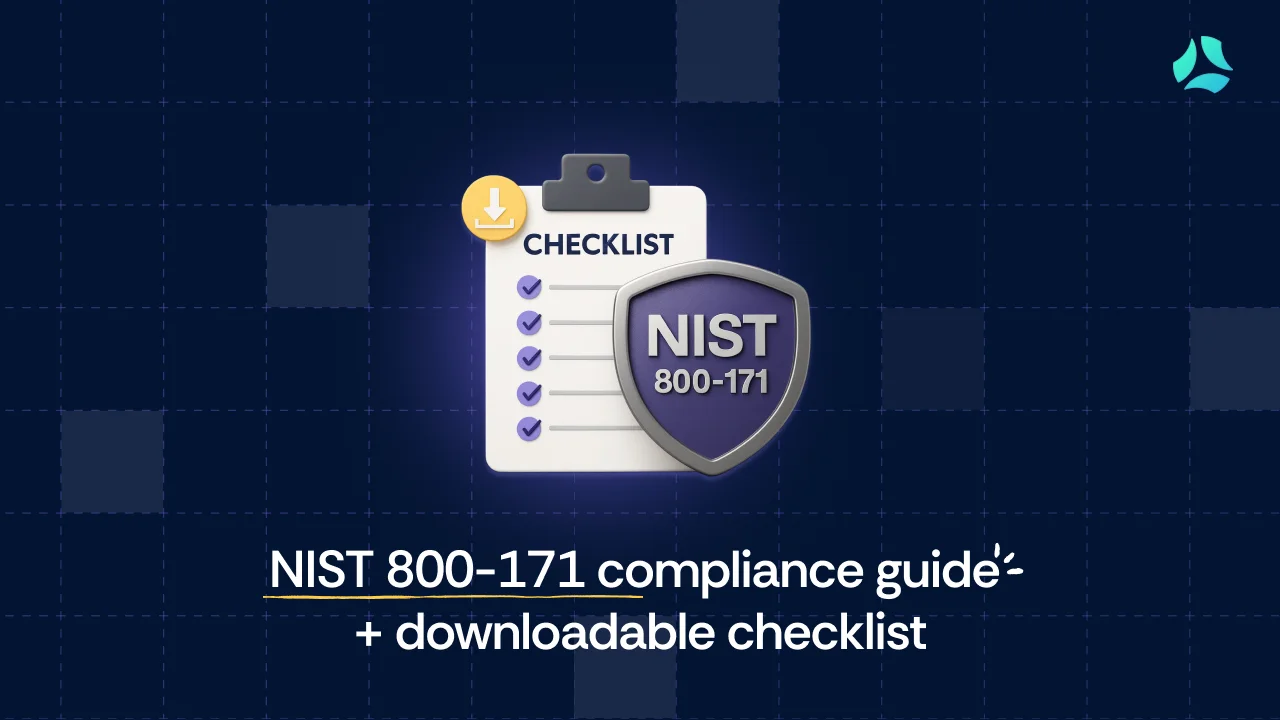Data Governance Metrics & KPIs: Key Insights

Data fuels your business, but without proper governance, it can turn into a liability, exposing you to compliance failures, costly errors, and missed opportunities. Strong data governance initiatives, backed by metrics, KPIs, and a robust audit program, are your compass, guiding you to secure, reliable, and actionable insights that drive growth.
This guide reveals how to track and report on data governance effectively, ensuring your organization stays compliant, efficient, and ahead of the curve.
What are data governance metrics?
Data governance metrics are quantitative measures used to evaluate how well your data governance policies and processes are performing. They help assess whether your organization is managing its data in a way that supports security, privacy, quality, and compliance objectives.
These metrics don’t fix problems or ensure compliance on their own, but they show you where things are working and where they’re not. Think of them as dashboards for your data governance efforts.
Data governance metrics are especially important in industries with sensitive data or strict regulatory obligations, such as healthcare (HIPAA), finance (PCI DSS, SOX), or SaaS and tech companies that handle large volumes of personal or customer data and must demonstrate compliance with standards like SOC 2, ISO 27001, or GDPR.
Examples of data governance metrics include:
- Data accuracy rate (Are customer records correct?)
- Percentage of completed access reviews (Are you reviewing who has access to what?)
- Policy exception count (How often are data policies being bypassed?)
These metrics are used by CISOs, compliance managers, data stewards, and IT teams to track progress, identify gaps, and make informed decisions that reduce risk.
Let’s define the core terms first:
1. Data:
Raw facts or digital records collected and stored by an organization — e.g., names, addresses, login logs, transaction histories.
2. Governance:
The policies, processes, and controls used to manage data responsibly, ensuring it is secure, accurate, accessible, and used in line with internal and external requirements.
3. Metrics:
Quantitative measurements used to track performance, progress, or trends. In data governance, these could relate to access control, data quality, policy adherence, etc.
What are data governance KPIs?
Key performance indicators (KPIs) are goal-oriented metrics used to measure how effectively your organization is meeting its data governance objectives. Unlike raw metrics, KPIs are tied to strategic priorities and designed to help answer the question, “Are we succeeding in governing our data in a way that reduces risk, supports compliance, and enables the business?”
Data governance KPIs should be SMART (Specific, Measurable, Achievable, Relevant, Time-bound) indicators that focus on high-impact governance outcomes.
They help organizations:
- Understand the current state of data controls
- Track the effectiveness of data policies and procedures
- Spot risks before they escalate
- Align governance efforts with compliance goals (e.g., SOC 2 readiness or GDPR reporting)
Examples of data governance KPIs in compliance:
- Percentage of employees who’ve completed data protection training
- Frequency of policy violations by department
- Mean time to resolve data incidents or breaches
These KPIs help compliance and security leaders monitor accountability, demonstrate compliance during audits, and continuously improve their data programs.
How do KPIs differ from metrics?
- Metrics are raw signals (e.g., how many inactive accounts exist).
- KPIs are goal-driven summaries that show performance against a benchmark (e.g., “100% of inactive accounts must be reviewed monthly”).
Key areas to measure in data governance
Effective data governance isn’t just about having policies—it’s about tracking the right things. Here are some key areas where metrics can help you measure progress and spot gaps.
1. Data quality metrics score
Data quality metrics assess how trustworthy, usable, and accurate your data is across key dimensions. These include accuracy (is the data correct?), consistency (is it uniform across systems?), timeliness (is it up to date?), and completeness (are all required fields filled?). These metrics are crucial for compliance reporting, decision-making, and day-to-day operations.
Example: A financial services company finds that 15% of customer records have mismatched addresses across systems. To improve reporting accuracy and customer communications, it sets a KPI to reduce mismatches to under 2% by the next audit cycle using automated validation rules and regular reconciliation.
2. Data security & incidents
Data security metrics help evaluate how effectively your systems are protecting sensitive data from breaches, leaks, and unauthorized access. They focus on incident detection and the robustness of access controls, both of which are critical for meeting compliance requirements like ISO 27001, PCI DSS, and HIPAA.
Example: A fintech company tracks the number of failed access attempts to cardholder systems and notices a recurring pattern outside business hours. To strengthen controls, they set a KPI of zero unauthorized access attempts per quarter, backed by real-time alerting and regular access reviews.
3. Data availability metrics
These metrics evaluate whether your data is accessible when needed to support critical operations. They are essential for business continuity, ensuring that users can participate in data usage and adoption activities without disruptions. They also reflect system reliability and data delivery efficiency.
What is the success metric?
A success metric defines what acceptable performance looks like. For data availability, examples include:
- ≥99.9% system uptime per month for mission-critical applications
- <2 seconds average latency for standard data queries during peak hours
Example: A logistics company monitors data uptime for its route optimization systems and notices performance dips during peak hours. It sets a KPI to maintain ≥99.9% uptime and <2 second query latency by upgrading infrastructure and load-balancing queries across data clusters.
4. Data compliance
Data compliance metrics help assess how well your organization is aligned with regulatory compliance and data privacy obligations (e.g., GDPR, HIPAA, SOC 2). These metrics demonstrate that appropriate data controls are in place and working.
Example: A cloud provider tracks the percentage of data subject access requests (DSARs) fulfilled within regulatory timelines. With current compliance at 85%, they establish a KPI to increase it to 100% by the next quarter through automation and clearer process ownership.
5. Data governance training and awareness
These metrics gauge how well your employees and stakeholders understand and engage with governance protocols. Effective training ensures people and processes are aligned, reducing the risk of accidental data mishandling and building a culture of accountability. It also reflects stakeholder engagement and readiness to adopt governance-enabling technology.
Example: An enterprise rolling out ISO 27001 identifies that only 88% of employees with system access have completed training. It sets a KPI of reaching 100% training completion in the next 60 days and makes training mandatory during onboarding and annual reviews.
6. Data ownership and stewardship
These metrics assess whether responsibility for data is clearly defined and effectively upheld across the organization. A mature data governance framework assigns both data owners—who are accountable for data quality, usage, and compliance—and data stewards—who handle the day-to-day operational tasks. Clear ownership leads to faster decision-making, better compliance, and fewer gaps in accountability.
Example: A bank finds that only 60% of key data tables have assigned owners. To ensure faster incident response and policy enforcement, it sets a KPI to reach 100% ownership coverage within two quarters and links stewardship duties to quarterly performance reviews.
7. Metadata and data catalog coverage
These metrics reflect how comprehensively your organization’s data is documented and discoverable. A strong metadata foundation—often centralized in a data catalog—supports effective governance by enabling easier data discovery, usage, and classification. Catalog coverage also reveals how much of your data estate is actively governed.
Example: A SaaS company finds that only 75% of its datasets have complete metadata (owner, description, classification). To improve traceability, it sets a KPI to increase metadata coverage to 95% in six months by embedding catalog updates into publishing workflows.
8. Policy coverage and enforcement
These metrics help measure how extensively data governance policies are defined, adopted, and enforced across systems and teams. Without consistent enforcement—whether for access, retention, privacy, or usage—policies have limited impact. These metrics reveal where policy gaps or violations exist and where automated enforcement may be needed.
Example: A healthcare company detects that only 80% of its environments have automated access controls. It sets a KPI to reach 100% coverage by quarter-end and configures alerts to flag policy violations in real time.
9. Data lifecycle and retention
These metrics track whether data is being properly archived, deleted, or retained in accordance with internal policy and external regulations. Effective lifecycle management reduces storage costs, minimizes exposure risk, and simplifies compliance with standards like GDPR, HIPAA, or ISO 27001.
Example: A tech company discovers that 20% of datasets have no defined retention policy. To meet GDPR and ISO 27001 expectations, it sets a KPI to achieve 100% policy coverage and auto-archive expired data within one year using built-in lifecycle tools.
How does a scorecard help to measure data governance?
A data governance scorecard is a structured tool that brings together key metrics to help organizations monitor the health of their governance program.
It offers a consistent way to evaluate areas like data quality, governance maturity, security, and compliance, making it easier to track progress, identify gaps, and keep all stakeholders aligned. By defining clear metrics and targets (such as accuracy, completeness, timeliness, or policy adherence), the scorecard ensures that teams across the organization are working toward shared goals and measuring outcomes using the same standards.
Beyond measurement, the scorecard also enhances communication and accountability. It creates visibility for senior leadership, clarifies ownership for each metric, and supports compliance reporting by surfacing trends over time.
Whether you’re improving internal governance or preparing for external audits, a scorecard helps you turn raw data into actionable insights, strengthening your ability to manage risks and drive better decisions across the business.
How to effectively report data governance?
Effective reporting is the backbone of a successful data governance program. It turns raw metrics into meaningful insights that help teams stay accountable, leadership stay informed, and compliance efforts stay on track. Here are some best practices:
1. Centralize with master data management (MDM)
Start by organizing and maintaining consistent, accurate master data—such as customer, product and financial information—across systems. A strong MDM foundation eliminates duplication and fragmentation, ensuring that reporting is based on a single, trusted source. Without this consistency, even the most advanced reporting tools can surface misleading or incomplete insights.
2. Use data governance tools
Modern data governance tools help track key metrics like data quality scores, policy adherence, and access controls. These platforms often include built-in monitoring, audit logs, and compliance checklists that reduce the effort needed to compile reports manually. They also make it easier to demonstrate governance maturity during internal reviews or external audits.
3. Automate where possible
Automate the collection of routine metrics—such as training completion rates, user access reviews, or data incident counts—to improve efficiency and reduce human error. Automation ensures that data stays up-to-date and available in real time, making governance reporting more responsive and less reliant on spreadsheets or siloed trackers.
4. Visualize with dashboards
Real-time dashboards turn raw data into accessible, visual summaries. Whether you’re tracking improvements in data quality or identifying areas of non-compliance, dashboards provide quick insights for both technical and business stakeholders. They support transparency, make trends visible over time, and help drive informed decision-making across the organization.
5. Audit and compliance readiness
Once governance metrics are captured and visualized, the next step is making them usable for audits and regulatory reporting. This means ensuring that all activity is traceable, policies are version-controlled, and reports can be exported in formats acceptable to auditors or regulators. Capturing policy enforcement logs—such as who accessed what data, when, and why—demonstrates that controls are being applied in practice, not just on paper. Maintaining version history of governance policies and reporting frameworks supports audit trails and change tracking. Finally, generating reports in standardized, exportable formats (like CSV, PDF, or JSON) helps speed up third-party reviews and ensures accountability at every stage of the data lifecycle.
What are some obstacles to gathering data metrics?
One of the biggest obstacles to gathering data metrics is fragmentation when data is spread across disconnected systems or departments, it becomes difficult to get a unified view of governance performance. Without standard definitions for metrics like accuracy or timeliness, teams may measure things differently, leading to inconsistent or unreliable reporting.
Manual data collection is another common challenge; it’s time-consuming, error-prone, and often outdated by the time it’s compiled. Limited access to data governance tools or automated tracking only adds to the friction, making it harder for organizations to monitor trends or flag issues in real time.
Overcoming these obstacles requires a combination of centralized data management, clear metric definitions, and the right technology to automate and standardize measurement across the board.
How to use and implement data governance metrics
Once you've identified the right data governance metrics, the next step is putting them into action. Metrics are most effective when they’re tied to clear goals, monitored regularly, and used to guide improvements, not just report on performance. By embedding them into daily workflows and accountability structures, you ensure that data governance becomes part of how your organization operates, not just a compliance checkbox.

Here’s how to implement them effectively:
- Define clear success metrics
Set measurable targets for each metric based on business goals or compliance requirements. - Assign ownership
Link each metric to a responsible team or individual to ensure accountability. - Integrate with tools
Use data governance platforms or dashboards to automate tracking and surface insights. - Review regularly
Monitor performance monthly or quarterly to identify trends, gaps, and areas for improvement. - Act on Insights
Use the data to inform decisions, adjust processes, and strengthen your governance program.

FAQs
1. What is data quality in data governance?
Data quality in data governance refers to how accurate, consistent, complete, and timely your data is—ensuring it can be trusted for decision-making and compliance. High data quality is a core outcome of governance, as poor-quality data can lead to operational inefficiencies, incorrect insights, and regulatory risk.
2. What are data metrics?
Data metrics are quantitative measures used to evaluate specific aspects of your data management—such as error rates, access control violations, or system uptime. They help organizations monitor the health and performance of their data environment and inform improvements.
3. What is the difference between metrics and data governance?
Metrics are individual measurements that reflect how well certain data-related processes are performing. Data governance, on the other hand, is the overarching framework of policies, standards, and roles that guide how data is managed, protected, and used. Metrics help assess whether data governance efforts are effective.
4. What is the importance of tracking data governance KPIs?
Tracking data governance KPIs helps organizations evaluate whether their data practices are aligned with business and compliance goals. These KPIs provide visibility into areas like data quality, security, and training effectiveness—enabling proactive improvements, audit readiness, and risk reduction.
5. Is a compliance KPI the same as a data governance KPI?
No, a compliance KPI is not same as data governance KPI as a compliance KPI focuses on regulatory adherence like audit success rates or the number of privacy violations. A data governance KPI is broader and may include compliance metrics, but also covers areas such as data quality, availability, and training participation.
6. What makes data governance successful?
A successful data governance program is one that delivers measurable value. Key factors include:
- Regularly measuring performance and progress
- Identifying areas for improvement
- Demonstrating business impact and securing stakeholder buy-in
- Maintaining accountability and clear data ownership
- Ensuring continuous compliance and data integrity
7. What are the pillars of data governance?
The core pillars of a strong data governance framework typically include:
- Data quality: Ensuring data is accurate, complete, and reliable
- Data security: Protecting data from unauthorized access or breaches
- Compliance: Aligning with regulations like GDPR, HIPAA, or SOC 2
- Data stewardship: Assigning ownership and responsibility
- Technology and tools: Leveraging solutions for automation and monitoring


















